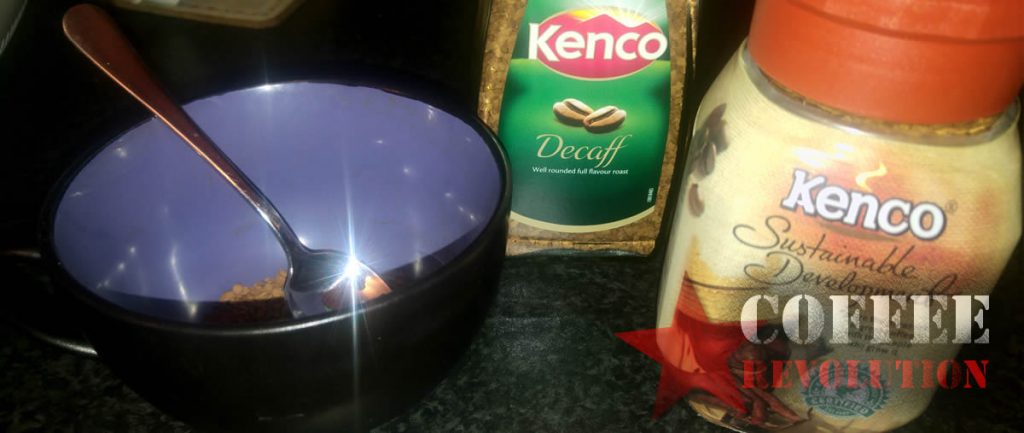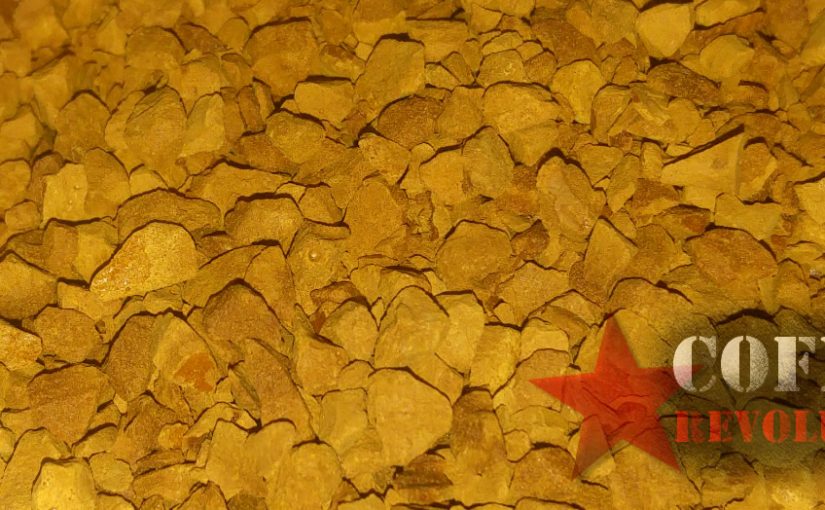First invented in the 1770’s in Britain, instant coffee wasn’t able to easily be produced in mass quantities until much later in 1910, when the instant coffee business started to really take off.
There are two main ways that instant coffee is produced, the first uses dry hot air to absorb the moisture in the coffee, and the other uses a freeze drying process.
Freeze Dried instant coffee
Starting with the modern freeze drying method, tons and tons of green coffee beans are transported into massive horizontal roasting drums, where they are roasted to perfection. After roasting, the beans are processed through a grinding mill, and ground quite coarse.
Then, the ground beans are transferred to industrial coffee makers, that brew using pressure and hot steam to extract as much as possible from the grounds. In some factories, these coffee makers can produce up to 5,000 gallons of coffee in under an hour. This is roughly equivalent to 53,000 cups of coffee.
After brewing, the coffee is then carefully heated so that the bulk of moisture is drawn out, and the remaining solids and liquids form a thicker concoction.
This brewed concoction is then spread out on a smooth conveyor belt where it is taken through a freezer kept at -58 degrees Fahrenheit, -50 Celsius. At the end of the line, when the concoction is beyond frozen solid, it is broken up into a powder.
The powder, at this stage, still contains a fair bit of moisture, and is poured onto trays, then placed into a massive low pressure tube.
This vacuum is heated to 140 degrees Fahrenheit, 60 degrees Celsius, and because of the low pressure, any remaining frozen water turns directly into steam, a process known as sublimation.
At this point, the granules are as dry as they will get, so they are then transported to the packaging section of the factory, packaged, and shipped across the globe.

Spray dried instant coffee
Spray-drying is the second, and less expensive, method to produce instant coffee. This method is more common, as it is easier to do. The process starts off very similar to that of freeze dried instant coffee, up to where the concoction is put into the freezer.
Instead of freezing, the brewed coffee is pushed through an atomizer sprayer into a very hot and dry vessel, around 520 degrees Fahrenheit, 270 Celsius. The Atomizer’s role is to spray the coffee out in equally sized drops so drying can be even throughout.
As the coffee is sprayed, each droplet of coffee dries out in 5-30 seconds, depending on the temperature inside the vessel, and settles as a powder on the bottom. This powder is then collected, packaged, and shipped out.
Freeze dried coffee tends to have a better flavor, but costs a little more, as less of the aroma is lost in the freezing process. It also resembles tiny pieces of cracked glass, but dissolves slower than the powder that spray-drying produces and a cheaper cost.
What is the best instant coffee?
We actually find quite a wide variation with most brands as different blends and beans are used depending on the supply.
We do like the Millicano, Kenko and Carte Noir brands, which seem to offer quite a consistent taste from batch to batch.
We favor freeze dried coffee and always try to buy from ethically approved supply chains where possible.
Generally instant coffee is kept in storage for too long, if you buy a jar we recommend you use it up quickly once opened.
Some instant coffees are now produced with the addition of some very fine ground coffee to give the full fresh coffee experience and we have to admit it does taste pretty good.
